Private First Class Carl (Fritz) Demro

- Unit: First Ammunition Train, Company D
- Date of Birth: June 16, 1889
- Entered the Military: September 4, 1917
- Date of Death: April 26, 1980
- Hometown: Nashua, Iowa
- Cemetery: Block 17, Row 5, Lot 17, Grave 9. Oak Hill Cemetery, Nashua, Iowa
Nashua-Plainfield Junior/Senior High School
2017–2018
Before the War
Carl Fred Demro, better known as “Fritz,” was born on June 16, 1889, in Nashua, Iowa to Albert and Lena (Langway) Demro. Demro was the second oldest child in a close-knit family of 13 children, five of whom served in World War I. Throughout his youth, he lived in the family home located along the Cedar River.
At age 17, Carl Demro and his older brother, Chris, hitched a ride to South Dakota without telling their parents, to join a threshing crew for several months. During that time, a story reached their parents about three youth killed in a South Dakota threshing operation, leaving the family fearing the worst. However, their fear turned to joy weeks later when the boys returned home in good health from their adventure.
Community Builders
Upon his return home, Carl Demro quickly settled into the family trade, masonry. He worked alongside his brothers and father, Albert, whose business, A.T. Demro and Sons, did masonry and plastering work all around the area. In 1912, the Demro brothers built the foundation for St. Michael’s Catholic Church in Nashua that still stands today. The Demro family probably had a hand in building nearly every house and business in town during that era, as they had a strong reputation for both their foundation and plastering work.
A Valuable Discovery
In his spare time, Carl spent considerable time in and around the river and, in 1912, found a pearl reportedly valued at $1,600. According to several newspaper accounts, he declined to sell his treasure to a trader from Dubuque who offered him $1,200 for his valuable find. Later, according to family members, Demro sold it to a buyer who eventually sold it to the king of Spain for his asking price.
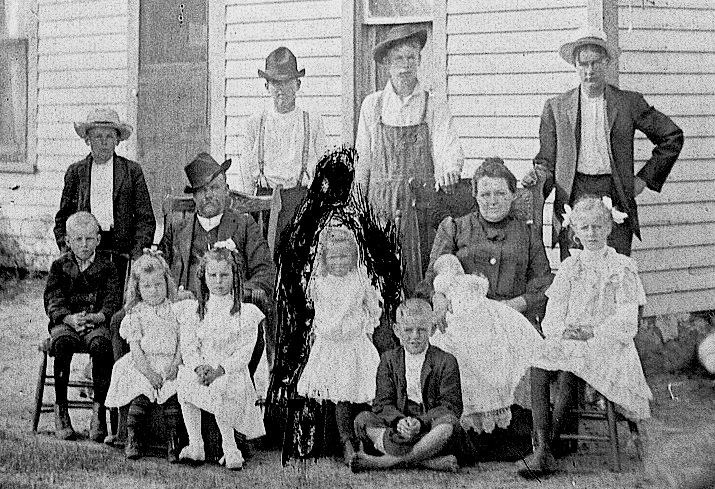
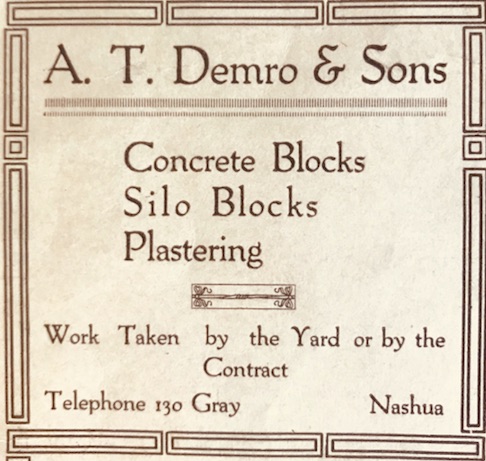
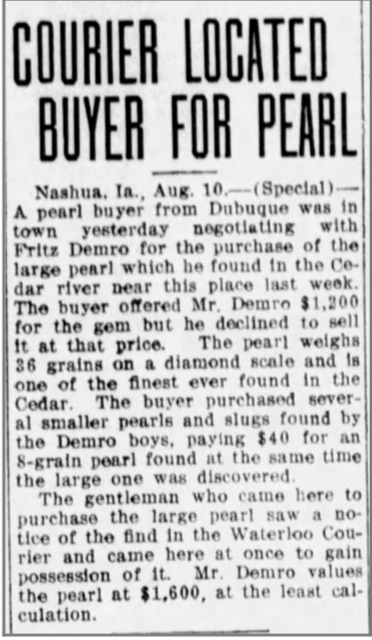
Military Experience
We Want You
In 1917, 28-year-old Carl Demro became the first Nashua, Iowa man drafted for service in World War I. According to the Nashua Reporter, Demro was part of the first five percent of drafted Chickasaw County men sent to Des Moines, Iowa on September 5, 1917 for their final physicals. Demro later completed training at Camp Pike in Arkansas as part of Iowa Company D, First Ammunition Train. He departed for France on the SS Euripides on June 20, 1918 to join the Allied Expeditionary Forces as part of the Automatic Replacement System.
France: Foxholes and Fighting
While few specifics are known about Demro’s time overseas, diaries and military notes indicate that Demro’s company was part of America’s first motorized ammunition train. This unit supplied all the ammunition for the entire 1st Division in Europe. This job required them to transport ammunition to the front lines for use. According to his discharge papers, Demro was with the American Expeditionary Forces in the Sazaris Sector of France from August 7–24, 1918; at the Battle of Aisne-Marne from July 18 to 24, 1918; at St. Mihiel from September 12 to 16, 1918; as well as with the 1st Federal Artillery Brigade at the Battle of Meuse-Argonne from September 26 to November 8, 1918.
While he received no medals for his service in France, he appeared to be a model soldier. He had no discipline remarks on his discharge record when he returned to the U.S. on September 4, 1919. The U.S. Army later processed Demro out of the military at Camp Dodge in Des Moines, Iowa, where he arrived on September 26, 1919.
The dangerous conditions Demro experienced during the Great War can only be inferred through stories that several of his grandchildren recalled him telling them. According to grandson Chad Demro, “When I was little, he used to sit me on his knee and tell me the same war story. He said he spent the night in a foxhole (probably an artillery crater) in no-man’s land next to dead German and French soldiers. He said there was one on each side of him.” Thus, although he survived the war, Demro never forgot the horrors he experienced during military combat.
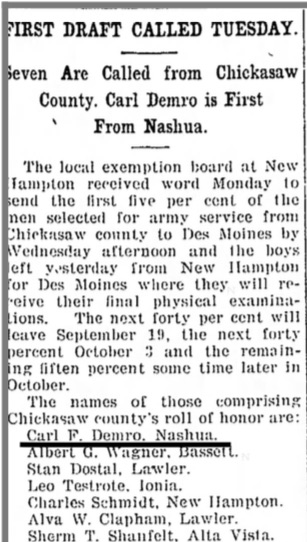
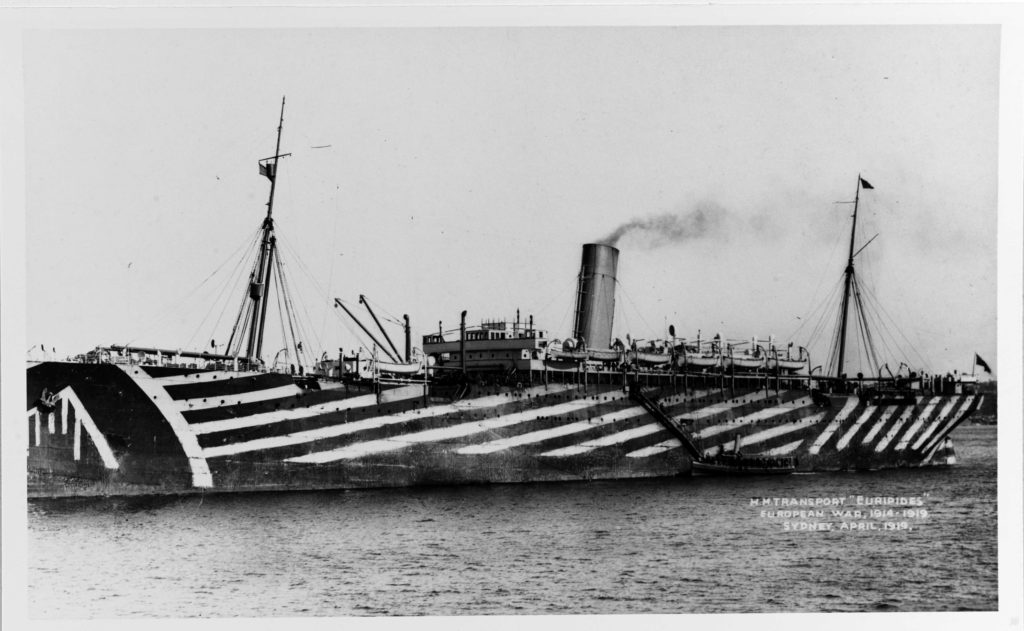
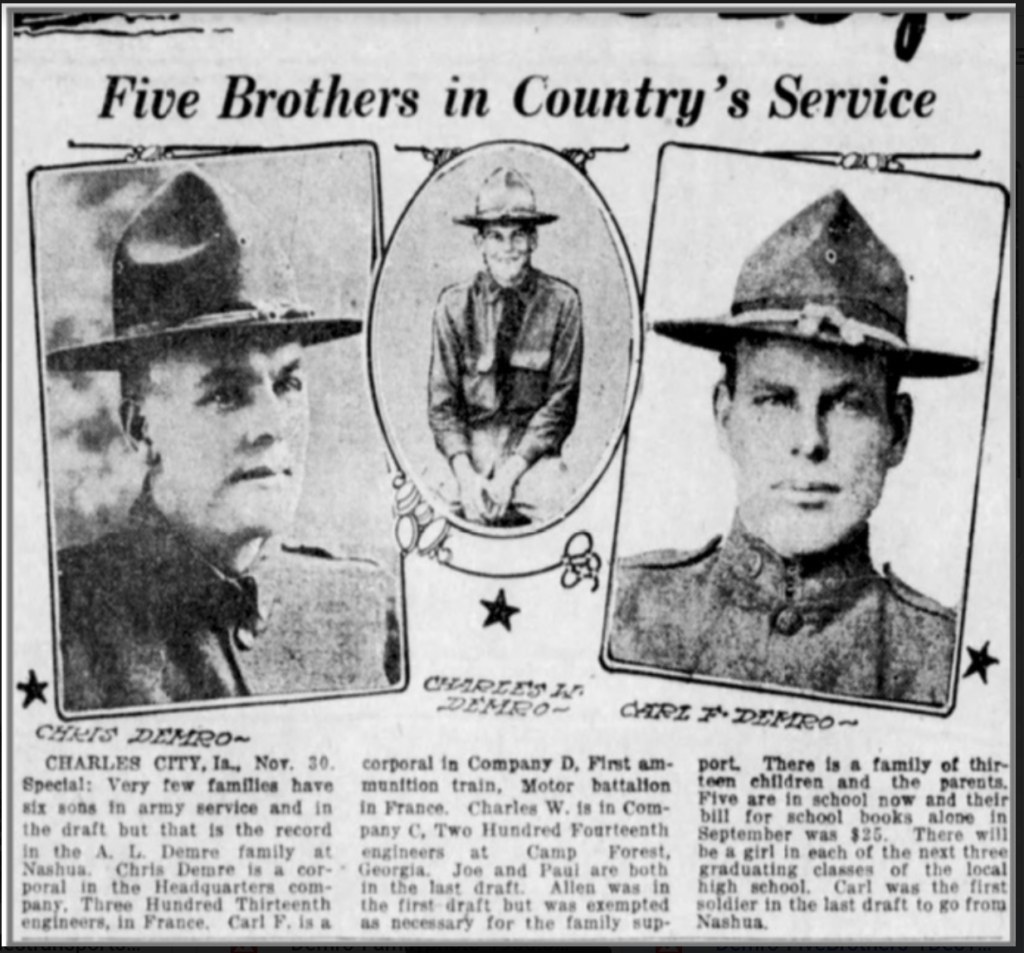
Veteran Experience
Demro was honorably discharged from military service when the war ended, but he did not return to the United States until September 4, 1919. Demro was 30 years old when he arrived back to his Nashua, Iowa home, and began life as a military veteran. On December 11, 1920, he married Sylvia Hamm in Waverly, Iowa. The newlywed couple made their home along the Cedar River in Nashua where they raised four children. Demro resumed working alongside his brothers in the family masonry business.
A Local Hero
The location of the family’s home set the stage for several acts of heroism. According to a 1940 Lake Park News article, Demro and his daughter rescued four separate people from drowning in the Cedar River over the course of 30 years. Active in the Nashua Veterans of Foreign Wars, his post named Demro Grand Marshall of the Nashua Veterans Day parade in 1978.

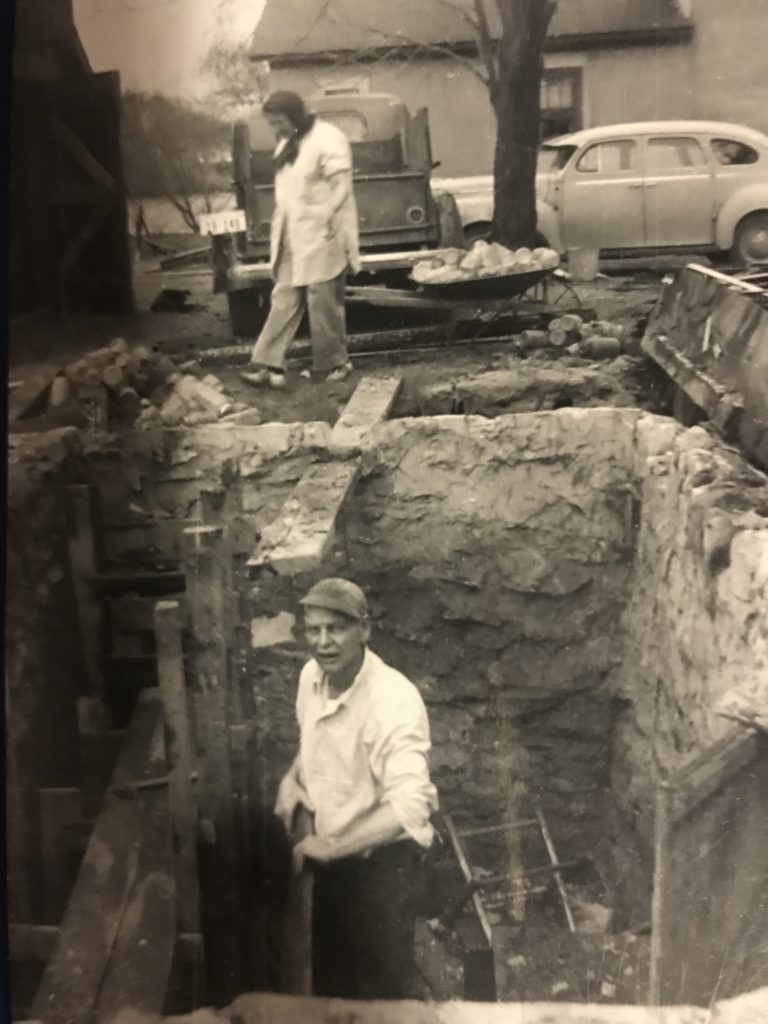
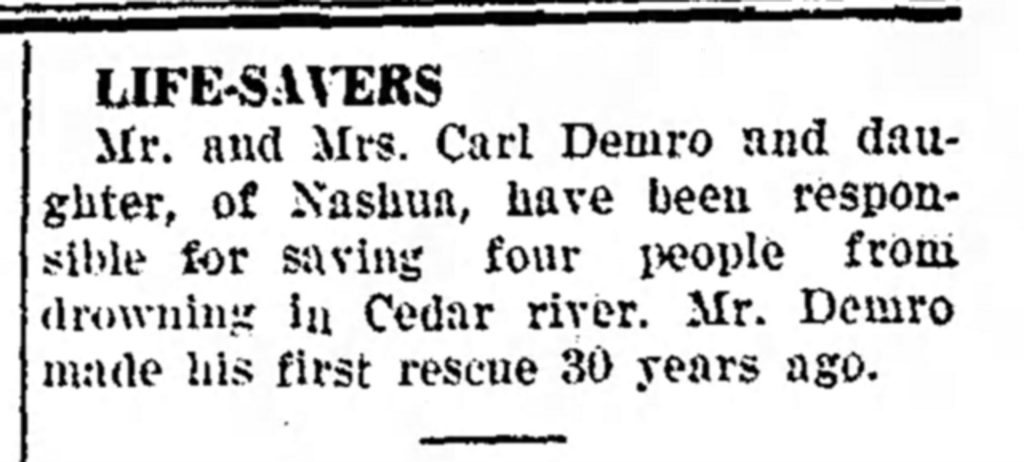
Commemoration
Carl Demro had a full and productive life as a veteran after his tour of duty in Europe. On April 26, 1980, he passed away due to congestive heart failure at the Salisbury Baptist Home in Charles City, Iowa at the age of 90. A crowd of Demro’s family, friends, and community members attended his funeral to honor a man who served his country and community admirably.
Demro and his brothers are buried near one another at Oak Hill Cemetery in Nashua, Iowa. Like all Nashua military veterans, Demro is honored with a memorial at the Veteran’s Memorial Park in Nashua. He was a son, a father, a business owner, a soldier and, above all, an honorable man who put his country ahead of himself.
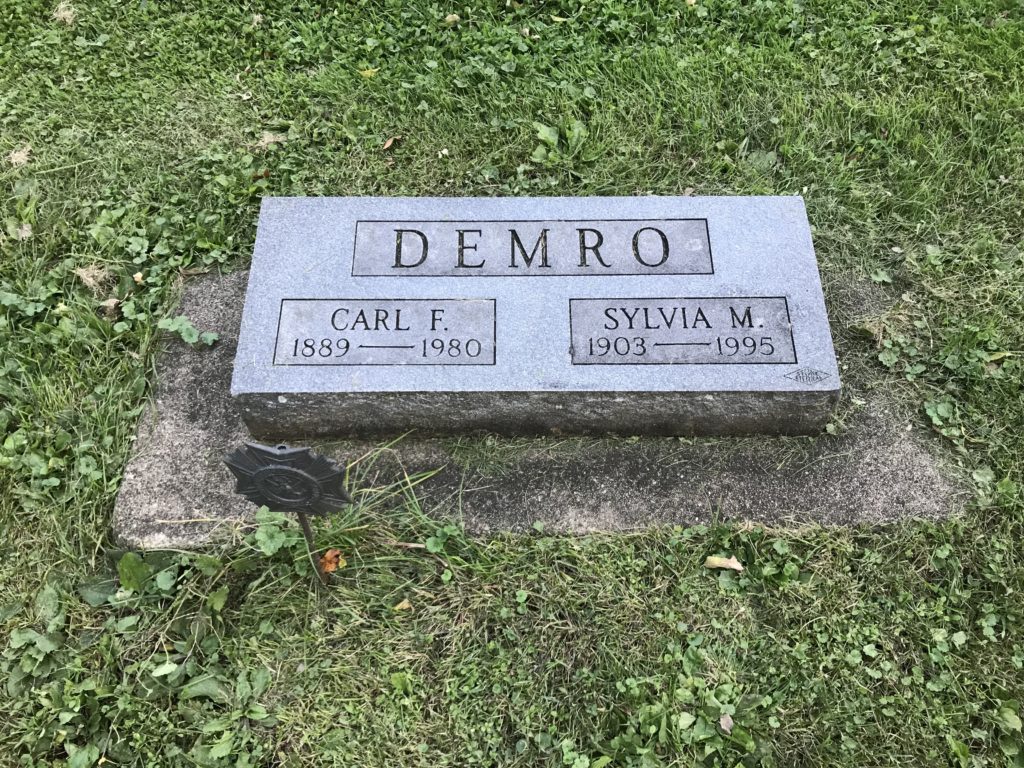
Bibliography
1st–4th Ammunition Train: World War I Strength Returns; Records of the Adjutant General’s Office, Record Group 407 (Box 381); National Archives at College Park, College Park, MD.
Auchstetter, Barb. Personal Interview by author. August 2, 2018.
Carl Demro, Final Pay Voucher. National Archives and Records Administration — St. Louis.
Carl Demro Records and Photographs. 1918–1980. Courtesy of Chad Demro.
Demro, Chad. Email interview by author. May 27, 2018.
Demro, Joanne. Personal Interview by author. September 9, 2018.
Demro, Scott. Personal Interview by author. September 9, 2018.
Demro Family Photographs. 1918–1980. Courtesy of Barb Auchstetter.
Des Moines Register. “Five Brothers in Country’s Service.” December 1, 1918. basic.newspapers.com/image/130726790/?terms=five%2Bbrothers%2Bin%2Bcountry%27s%2Bservice.
Hist. 1st Supply Train Personnel Rept.201-65.1 to Hist. 2nd F.Sig.Bn. Insp. & Memos 1919 201–56.2: Records of Combat Divisions 1917–1942 1st Division; Records of the American Expeditionary Forces (World War I) , Record Group 120 (Box 69); National Archives at College Park, College Park, MD.
Hist. 3rd M.G. Bn Field Messages 201-32.16 to Hist. 1st F.A. Brig. Ad Memo Aug/Sep 1918 201010.2: Records of Combat Divisions 1917–1942 1st Division; Records of the American Expeditionary Forces (World War I) , Record Group 120 (Box 58); National Archives at College Park, College Park, MD.
Hist. Artillery Plan for Defense Sector 201-31.23 to Hist. 1st F.A. Brig.Locate Artillery Bn 201-32.13: Records of Combat Divisions 1917–1942 1st Division; Records of the American Expeditionary Forces (World War I), Record Group 120 (Box 60); National Archives at College Park, College Park, MD.
The Lake Park News. “Life-saver.” Sept. 5, 1940. basic.newspapers.com/image/51835342/?terms=Carl%2BDemro.
The Nashua Reporter. “Carl Demro Succumbs at 90.” April 26, 1980.
The Nashua Reporter. “First Draft Called Tuesday.” Sept. 6, 1917.
The Weekly Nashua Post. “A.T. Demro and Sons.” Community Atlas. 1916.
Waterloo Courier. “Courier Located Buyer For Pearl.” Aug. 10, 1912. basic.newspapers.com/image/356614430/?terms=Carl%2BDemro.
War Diaries 1st Division Military Police 1st Ammunition Train; Records of the American Expeditionary Forces (World War I), Record Group 120 (Box 2603); National Archives at College Park, College Park, MD.
WWI Troop Transport Ships, U.S.S. Euripides. Photograph. April, 1919. Ancestry.com.

